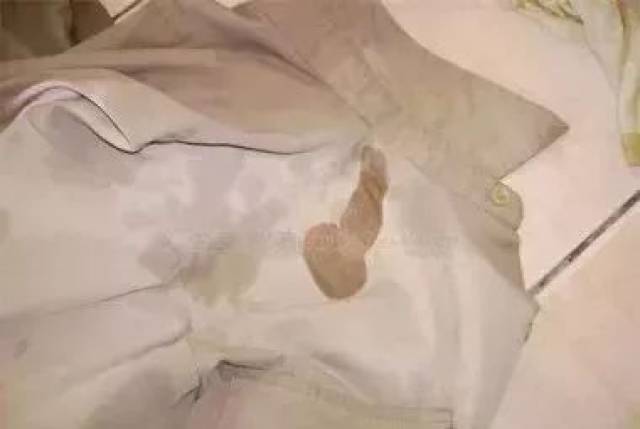
You’ve been doing their laundry for decades. You know the familiar oil stain from tinkering in the garage, the grass stain from gardening, the faint trace of coffee from a rushed morning. These are the stains of a shared life, each with its own story. But then, you find a stain that doesn’t fit the narrative. It’s a smear of a foundation or powder that isn’t your shade. A lipstick mark on a collar in a color you’ve never worn. A perfume or cologne that smells distinctly unfamiliar.
The discovery can feel like a physical blow. Your mind, trying to make sense of the dissonance, quickly writes the most painful script. These stains on their clothes don’t match their… story, or the life you share. They point to another person.
And while that is a possibility that must be acknowledged, the world of stains is a tricky landscape. Before we let that single narrative become the truth, it’s worth playing detective and considering the other, far more common, stories a mysterious stain can tell.
The Stain of an Innocent Encounter
We live in a crowded, messy world. Proximity is the great creator of stains.
- The Commuter’s Stain: That makeup on a shoulder could be from leaning against a headrest on a train or plane that was used by someone else. The perfume could be from a crowded elevator or a hug from a heavily perfumed coworker at a retirement party.
- The Good Samaritan’s Stain: Did they help someone change a tire? Assist a friend who was moving? In the close quarters of lending a hand, transfer is inevitable. The stain matches the scent or makeup of a grateful neighbor, not a secret lover.
- The Grandchild’s Art Project: A hug from a grandchild who has been playing in their mother’s makeup bag or who has sticky, scented hands from a craft project can leave behind a world of confusing evidence.
The Stain of a Hidden Struggle
Very often, a stain is not a sign of a new person, but of a private problem your partner is trying to manage alone.
- The Stain of a Health Issue: That mysterious stain could be from a topical cream for a rash, a muscle ache ointment, or even a small amount of blood from a medical procedure they’ve been too embarrassed or scared to mention. The stain matches their secret worry, not their infidelity.
- The Stain of a Habit: A smell of smoke or alcohol on their clothes when they claim to have been at the office could point to a hidden habit they’ve fallen back into, a private coping mechanism they are ashamed to admit.
The Stain of a Changing Self
Sometimes, the stain isn’t about another person at all, but about your partner’s relationship with themselves.
- The “Trying On” Stain: They might have been experimenting with a new cologne or makeup sample at a department store, a private moment of wondering, “What if I were different?” The stain matches a potential new identity they are testing out, not an actual affair.
- The Gift-Giving Stain: They could have been shopping for you, and a helpful, heavily made-up sales associate may have brushed against them while helping them pick something out. The stain matches the blueprint of a surprise for you.
And the Possibility You Fear
Of course, we must address the fear directly. A stain in the wrong place, in the wrong color, with the wrong scent, can be the physical evidence of an affair. It is the classic “lipstick on the collar” for a modern age. In this case, the stain is part of a larger, more disturbing pattern that includes emotional distance, secrecy, and a breakdown of your intimate connection.
The Conversation: How to Address the Evidence
Finding a stain and immediately launching an inquisition—“Whose makeup is this?!”—will only create defensiveness. The goal is to seek the story behind the stain, not to deliver a verdict.
Do NOT say: “I found another woman’s makeup on your shirt! You’re cheating!”
DO try this approach: Wait for a calm moment. Point to the item of clothing and say, calmly:
“I was doing the laundry and noticed this stain. It looks like makeup (or smells like a new perfume), and I was just wondering how it got there? It’s not something I recognize.”
This is not an accusation. It is a request for information. You are stating a fact and asking for help in solving a puzzle.
- An Innocent Reaction: They will likely look puzzled and then offer a plausible explanation. “Oh, that must have been from when I hugged Carol at her retirement party—she was crying and her makeup was a mess.” The story will feel genuine and check out.
- A Guilty Reaction: They will become immediately defensive, angry, or flustered. They might gaslight you (“That’s not a stain, it’s just a shadow!”) or turn the tables (“Why are you going through my clothes? You’re so paranoid!”). This overreaction is a major red flag.
A stain that doesn’t match your life is a clue, but it is not a conviction. It is a signal that a story is missing. By choosing to investigate with calm curiosity instead of furious accusation, you give your partner the chance to provide the real, and often innocent, context. You create a space for the truth, whether that truth is a simple explanation, a confession of a hidden worry, or the painful revelation of a betrayal. And in that truth, no matter how difficult, lies the only path forward.